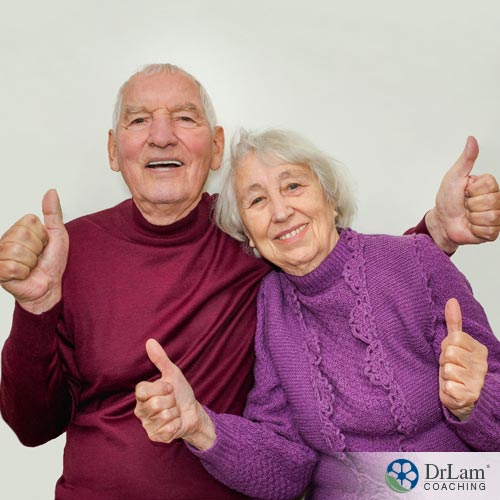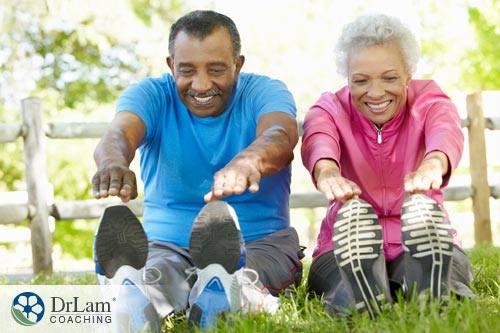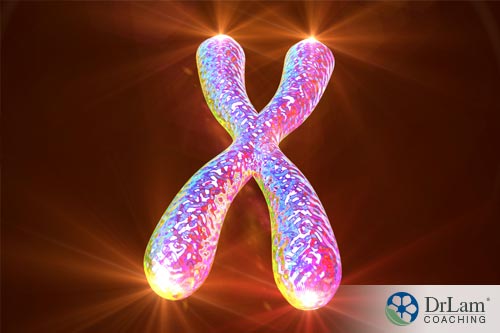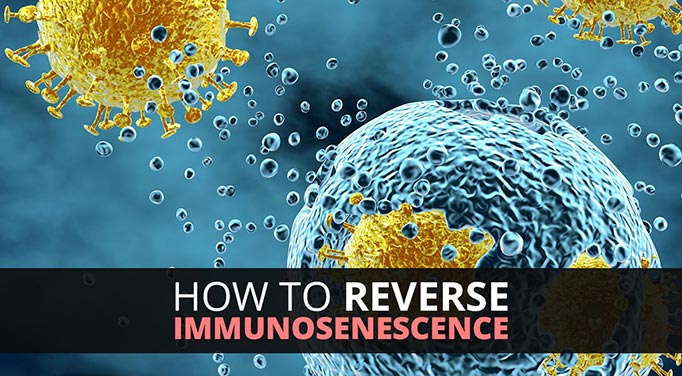 Replicative senescence is the process that stops cells from dividing forever, and it is linked to the Hayflick limit – a limit in the number of divisions a cell undergoes before it dies through programmed cell death. This number is around 50 doublings. Reversing Immunosenescence aims to increase cellular life.
Replicative senescence is the process that stops cells from dividing forever, and it is linked to the Hayflick limit – a limit in the number of divisions a cell undergoes before it dies through programmed cell death. This number is around 50 doublings. Reversing Immunosenescence aims to increase cellular life.
Dr. Leonard Hayflick was a biologist that discovered that cells go through three phases: rapid cell division, or mitosis, then a slowing of this mitosis, and finally senescence, when they stop dividing altogether. After they stop dividing, cells stay alive for a while until they apoptose.
Although it is still unclear how cells “count” the number of divisions they have undergone, one of the explanations is that it happens through telomeric shortening, which acts as a kind of counting mechanism.
A slowing of cell division is one of the components of intrinsic, or pure, aging. Intrinsic aging is caused by the shortening of telomeres on bone marrow stem cells, a decrease in the output of cells, and the shrinking of the thymus until it doesn’t do much anymore.
The thymus is a gland located between your lungs and behind your sternum. It secretes thymosin, a hormone that stimulates the development of T cells. It is only active until puberty, and by the time you’re 75, it is gone, completely replaced by fat. If you’re relatively healthy, it will have produced all the T cells you need by the time it is gone.
There’s not much anyone can do about intrinsic aging, it is the biological clock that winds down from the moment of birth. But, there is another type of aging that depends on the environment that you can do something about: extrinsic, or variable, aging.
Extrinsic aging is caused, or aggravated, by chronic stress, including psychological stress. That’s why you may have noticed people looking older after going through a particularly challenging time in their lives, like job loss or divorce.
Chronic stress decreases immune system function and speeds up immunosenescence through an increase in cortisol, a shortening of telomeres, and a decrease in telomerase activity. Telomerase is what synthesizes telomeric DNA sequences and provides the molecular basis for proliferative potential.
Another big stressor on the system is chronic pathogen exposure. This is when your immune system has to continuously work hard because you are being exposed to frequent attacks by pathogens and tumors. The Epstein Barr virus (EBV) and the Cytomegalovirus (CMV) are good examples of chronic pathogen exposure, and that is because they can live in your body for years or for the duration of your life, and your immune system has to vigilantly control them so they stay dormant.
CMV, which is a type of herpes virus, is a particularly important case, as its prevalence increases with age, starting with around 30-50% infection rate at 10 years of age, until around 90% infection rate in people who are 80 years of age. It remains in endothelial cells and monocytes for life, and it requires large amounts of cytotoxic T cells to continuously monitor it.
Some researchers believe that the increase in its prevalence with aging is sometimes mistaken for intrinsic aging, especially due to its effects on a very important molecule called CD28. CD28 is one of the proteins expressed on T cells, and it provides the co-stimulatory signals required for T cell survival and activation. And, if you remember, T cells are the main component of cellular immunity.
CD28 is also responsible for the activation, proliferation, and stabilization of mRNA, as well as glucose metabolism – all needed to make the immune system response work. And these all decrease with the loss of CD28, which is what happens with CMV exposure. Other proteins, such as CD95 and CD8, also decrease from pathogen exposure.
On top of the loss of these important proteins, negative proteins, such as CD28-, begin to accumulate in the system. And they don’t apoptose. As they accumulate, they increase proinflammatory cytokines, creating a state of inflammaging, speeding up immunosenescence, and taking up immunological space. This makes reversing CD28 loss and decreasing CD28- accumulation another factor in reversing immunosenescence.
Although the likelihood of exposure to EBV or CMV is very high, and along with this exposure there is an increased risk in immunosenescence and inflammaging, there are a few strategies you can implement in your life right now that can help with slowing down or reversing immunosenescence and reducing chronic inflammation.
First of all, as you’ve seen, chronic stress is at the top of the list. While you cannot reduce the stress that comes from EBV or CMV infections, you can definitely do a lot to reduce chronic psychological stress, as well as strengthen your adrenal glands and your NEM stress response.
With psychological stress, one thing that can make all the difference is in how you perceive and handle it. Resilience is a key factor in being able to not only manage stress, but to actually use it to your advantage by taking it as an opportunity to grow.
Using techniques that increase your heart rate variability (HRV) helps increase resilience, and these can include breathing techniques, gratitude journaling, focusing on the heart area, and biofeedback. Therapy, yoga, meditation, and support groups are all great options as well.
With physical stressors, you’ll want to deal with any existing conditions, especially AFS or any type of inflammation.
AFS recovery involves eating an adrenal fatigue diet, which is anti-inflammatory in nature because it does not contain allergenic foods, is full of antioxidants, and it can help seal a leaky gut. You can also add to it more anti-inflammatory foods and supplements, but only under the supervision of an experienced professional so you do not aggravate your condition.
 Adrenal breathing exercises and adrenal yoga exercises can be gradually added to your recovery plan, and the stronger you get the more rigorous exercises you will be able to do. You’ll need to start slow so you don’t add pressure or risk injury if you’re in a fragile state.
Adrenal breathing exercises and adrenal yoga exercises can be gradually added to your recovery plan, and the stronger you get the more rigorous exercises you will be able to do. You’ll need to start slow so you don’t add pressure or risk injury if you’re in a fragile state.
Getting enough rest and good quality sleep is another way to heal adrenal fatigue and recover from other conditions and stresses. That can be done by making sure your room is cool and dark, having a small snack before bed so you don’t get hypoglycemia during sleep, not using devices at least two hours before bed, and not turning on the bathroom lights if you need to use the bathroom in the middle of the night.
As your adrenals regain optimal function, they will be able to balance their cortisol secretion, with just enough cortisol to help neutralize inflammation without constantly flooding your body with “fight or flight” chemicals.
This multi-layered approach of stress-management, nutrition, exercise, and sleep is actually the healthiest and most natural method for reversing immunosenescence as well as increasing immune system function, decreasing oxidative stress, slowing down aging, and reducing inflammation.
 Doing a detox can also help reduce inflammation. When your system is clogged up, cell debris and metabolic by-products left over from the immune response can create more inflammation, and clearing them out keeps the system clean and the plumbing functioning.
Doing a detox can also help reduce inflammation. When your system is clogged up, cell debris and metabolic by-products left over from the immune response can create more inflammation, and clearing them out keeps the system clean and the plumbing functioning.
But, depending on your current state, a detox is something you have to be very cautious with, especially if you’re older or have advanced AFS. This is something you should only do under strict supervision. Improper detoxification can trigger adrenal crashes. The weaker the body, the higher the risk.
In addition to these natural approaches to improving immune system response and decreasing inflammation, there are now entire subfields in medical science dedicated to different anti-aging techniques, including reversing immunosenescence and other types of regenerative medicine.
One of these breakthroughs is telomeric activation.
 A study conducted in Sweden on octogenarians showed that one of the major factors in reaching ages 95 to 100 is whether they have an immune risk profile (IRP) or not. If their CD4 to CD8 ratio was less than one, which indicated IRP, they had a big chance of dying within five years.
A study conducted in Sweden on octogenarians showed that one of the major factors in reaching ages 95 to 100 is whether they have an immune risk profile (IRP) or not. If their CD4 to CD8 ratio was less than one, which indicated IRP, they had a big chance of dying within five years.
Those with an IRP didn’t necessarily look sick, nor were they suffering from comorbidities, but their immune system reserve was depleted, and so if they were exposed to any infections or tumors, their system was incapable of fighting them off. They would then get sick and die suddenly.
If the subjects had both IRP and CMV, the risk of mortality increased significantly. And one of the major factors that contribute to IRP is chronic psychological stress, which takes us back to the above strategies of reversing immunosenescence naturally.
In conclusion, if you have AFS, it is important to get your adrenals to a healthy state so you have a full defense against stressors, and if you’re suffering from any kind of inflammation, do what you can to reduce it and control it. There is a lot of great progress in regenerative medicine, but until these breakthroughs become readily available on the market, your best chance to live a long and healthy life by reversing immunosenescence is what you’ve known all along: eat healthy, exercise, sleep well, and manage stress levels.
© Copyright 2018 Michael Lam, M.D. All Rights Reserved.

